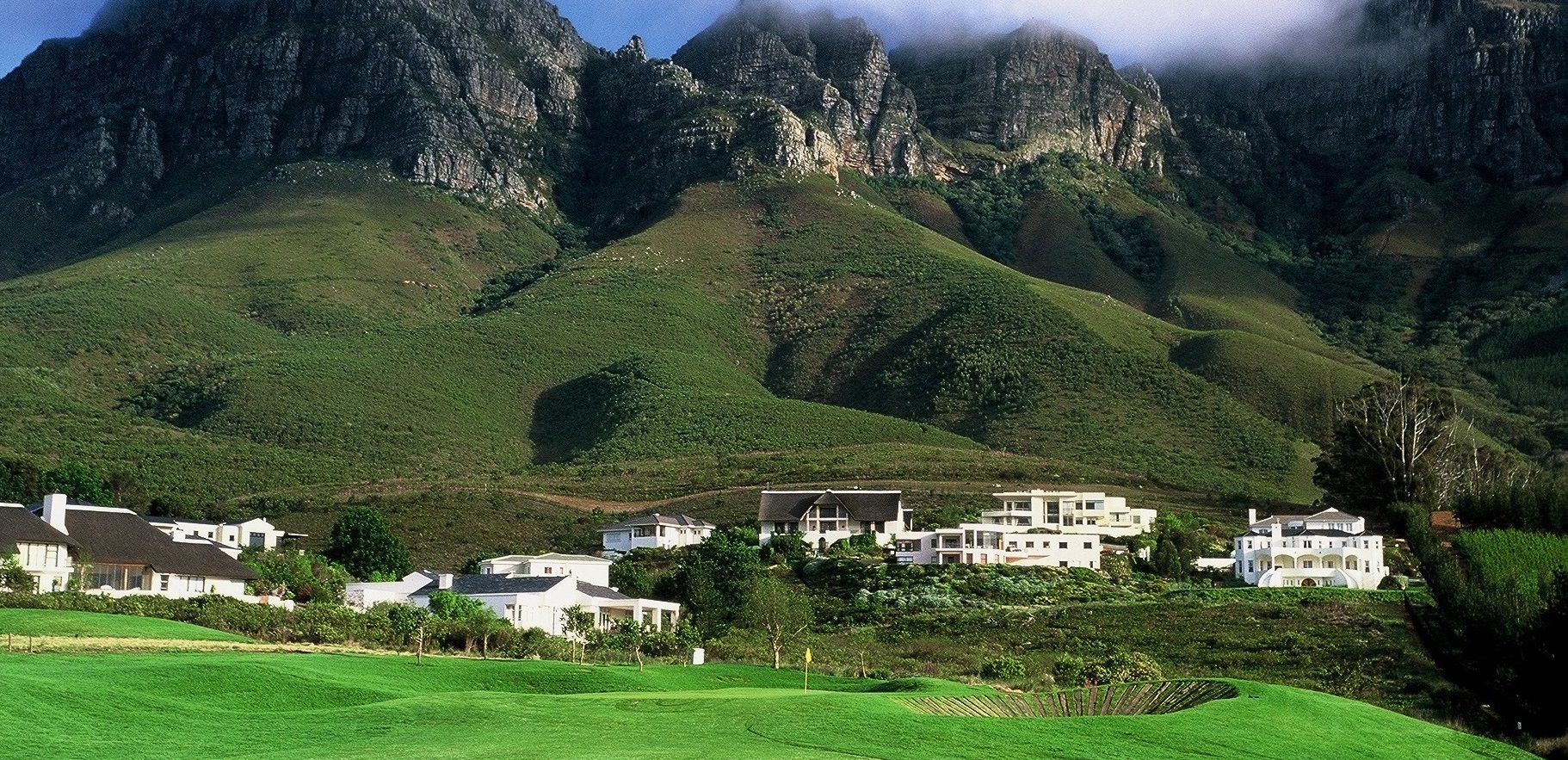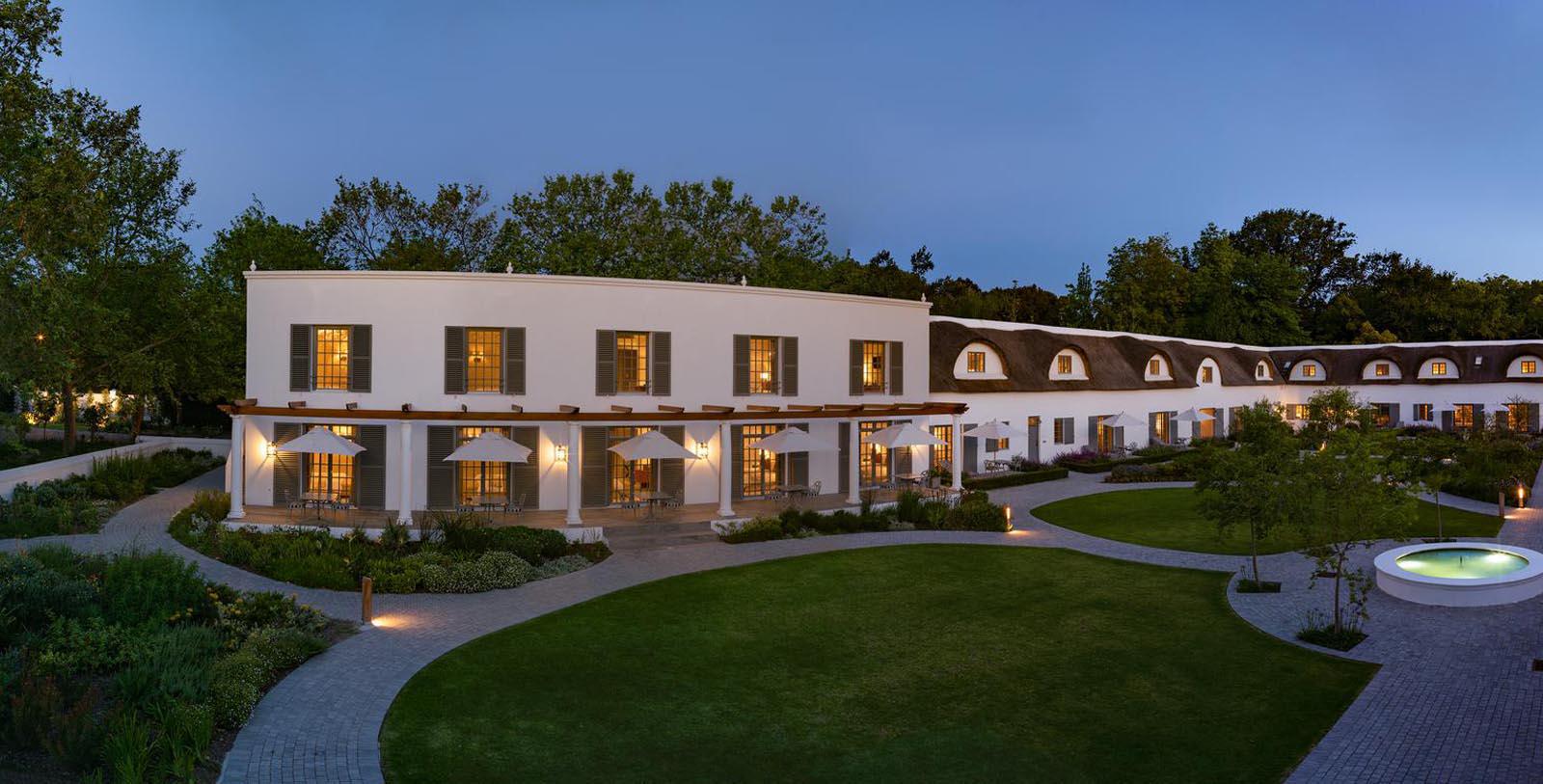Receive for Free - Discover & Explore eNewsletter monthly with advance notice of special offers, packages, and insider savings from 10% - 30% off Best Available Rates at selected hotels.
golf
Discover the Erinvale Golf Club, which was originally designed by renowned professional golfer Gary Player.
Guests staying at the Erinvale Estate Hotel and Spa have access to the majestic 18-hole golf course located at the neighboring Erinvale Golf Club. Located in the shadow of Helderberg Mountain, the club has been consistently ranked among South Africa’s best since its debut during the late 20th century. The land upon which the golf course currently resides was once farmland affiliated with the Welelegen estate that had existed since the mid-17th century. By the 1980s, the area had been obtained by a real estate development firm from Pretoria known as the “Bester Brothers.” Intent on making the area the site of high-density residential housing, Bester Brothers began zoning the area for construction in 1988. But the locals had grown increasingly concerned about the project’s potential impact on the surrounding historic towns, as well as the nature reserve nearby. The residents thus banded together to prevent the work, with David Gant—then the owner of Erinvale Estate Hotel and Spa—leading the effort. After surveying a range of potential strategies, Gant ultimately decided to buy the farm and develop it himself.
He began seeking the advice of a respected South African conservationist named Ian Player for advice on how best to utilize the landscape in an environmentally friendly manner. Player recommended that Gant create a magnificent golf course that would complement the geography, rather than disrupt it. Gant hired Player’s brother, the renowned professional golfer Gary Player, to craft its appearance. He became impressed with the landscape and eagerly agreed to design the course. Taking months to complete, Gary Player subsequently succeeded in creating a fantastic collection of fairways that blended seamlessly into the landscape. Indeed, Player had specifically endeavored to offer breathtaking views of the numerous natural wonders that surrounded the course, namely the peaks of the greater Hottentots-Holland Mountain range. Finally debuting as the “Erinvale Golf Club” in 1995, the golf course immediately became one of most luxurious destination for golf in South Africa. In fact, its layout and scenery eventually inspired the International Federation of PGA Tours to host the 43rd World Cup of Golf at the club just a year after it opened. Few places in the country continue to be such a fantastic place to play a round of golf than the Erinvale Golf Club.
-
About the Location +
Located in the verdant Hottentots-Holland valley, Erinvale Estate Hotel and Spa is just a short drive away from the vibrant metropolis of Cape Town. This magnificent destination also has a fascinating history that cultural heritage travelers will find interesting. The earliest known inhabitants of the region were the indigenous Khoe, nomadic cattle herders better remembered today as the “Hottentots.” But numerous European mariners eventually joined the Khoe, starting with the arrival of Portuguese navigator António de Saldanha in 1503. The sailors were attracted to the area due to its natural harbor and lush countryside, which offered plentiful supplies and shelter. In fact, one group of shipwrecked sailors from the Dutch vessel Haerlem spoke glowingly about the location upon being rescued in 1647. Acting on their recommendations, the Dutch subsequently decided to construct a small outpost that could service their own merchant fleet heading further west toward Asia. Thus in 1652, Jan van Riebeeck of the Dutch East India Company finally landed on the shores of outlying Table Bay and began constructing a stronghold that he called the “Fort de Goede Hoop.” A settlement grew around the base over the next several years, driven by the immigration of additional company employees throughout the 1650s and 1660s. The Dutch soon built townhouses around the fort, as well as sprawling manors in the fields beyond the town. The community gradually became the center of a prosperous Dutch colony known as “Cape Colony,” with the settlement emerging as a thriving international port. Visiting mariners gradually referred to the village as “Cape Town,” too, which the locals adopted as the permanent name.
Cape Town remained the administrative center for Cape Colony well into the 19th century, even after the Dutch formally ceded the region to the British in the wake of the Napoleonic Wars. (The British had seized the region during the latter stages of the conflict, as the Netherlands were aligned closely with French Emperor Napoleon Bonaparte at the time.) Cape Town has also grown to the size of an actual city, with its population numbering close to 200,000 at the height of the Gilded Age. While the city remained prosperous, it nonetheless failed to generate the same kind of industrialization that occurred in the rival cities of Pretoria and Johannesburg. In fact, those two communities had economically eclipsed Cape Town by the time the modern nation of South Africa first formed in 1910. Nevertheless, Cape Town continued to be a politically important city among South Africans for generations thereafter. Today, Cape Town remains an incredibly prestigious community in the country, serving as the contemporary home for the Parliament of South Africa. It has also created a reputation as an incredibly popular tourist destination, especially among cultural heritage travelers. The city is now the site for many fascinating attractions that chronicle South African history, including the Castle of Good Hope, the Bo-Kapp Museum, and the V&A Waterfront. But Cape Town is near dozens more locations as well, such as Table Mountain National Park, the Kirstenbosch National Botanical Garden, and the world-famous Cape Winelands region.
-
About the Architect +
Gary Player: Known popularly as the “Black Knight,” Player is remembered today as being among the best professional golfers to ever play the sport. Player began competing in golf professionally during the mid-1950s, joining the PGA Tour as a rookie. His ascent into the upper echelons of professional golf was rapid—over the next several years, Player’s skill made him one of the most followed golfers in the world. Indeed, his influence loomed so large that he was often considered as one of the eras “Big Three” alongside Jack Nicklaus and Arnold Palmer. Player would ultimately win the PGA Tour 24 different times throughout his career, which involved winning nine of golf’s major championships. Starting with his first victory in 1959, Player would subsequently win three Masters Tournament, three British Opens, two PGA Championships, a single U.S. Open title. The victories had also meant that Player had completed a “Grand Slam”—a rare feat in which a professional golfer obtains at least one of each major title. In fact, Player was just the third person in golf history to accomplish the milestone, with Ben Hogan and Gene Sarazen being the only other golfers to bear the distinction at the time. But Player completed many other noteworthy accomplishments, too, such as obtaining the most first place titles at the South African Open, the Australian Open, and the World Match Play Championship. He was even leading money winner on the entire PGA Tour in 1961! Nevertheless, Player facilitating an interest in golf course design around the time he entered the Champions Tour during the 1980s. He specifically created a company known as “Gary Player Designs,” which found immediate success for its use of beautiful and challenging course designs. In total, Gary Player Designs either renovated or constructed over 130 golf courses in 38 different countries. Among the most prolific courses that Player’s team eventually created included the Gary Player Country Club, Leopard Creek Country Club, and of course, the Erinvale Golf Club.
-
Famous Historic Golfers +
Gary Player, winner of nine major golf championships that include all four of the major tournaments.
Bernhard Langer, winner of two major championships, specifically the Masters Tournament in 1985 and 1993.
Ian Woosnam, winner of 52 championships, including the Masters Tournament in 1991.
Pádraig Harrington, winner of three major championships and captain of six consecutive Ryder Cup teams.
Ernie Els, winner of four major golf championships, including the U.S. Open and the British Open.



























